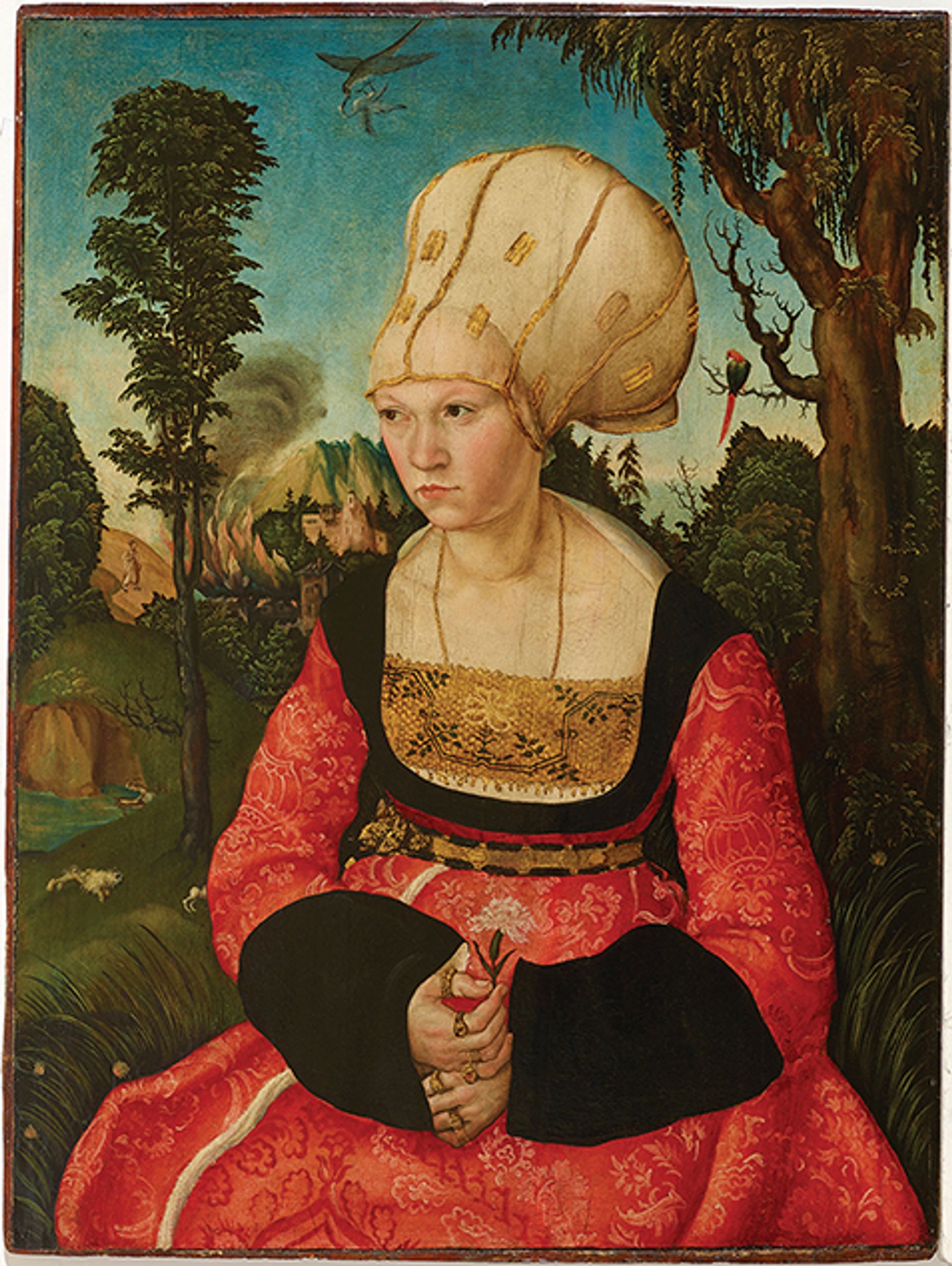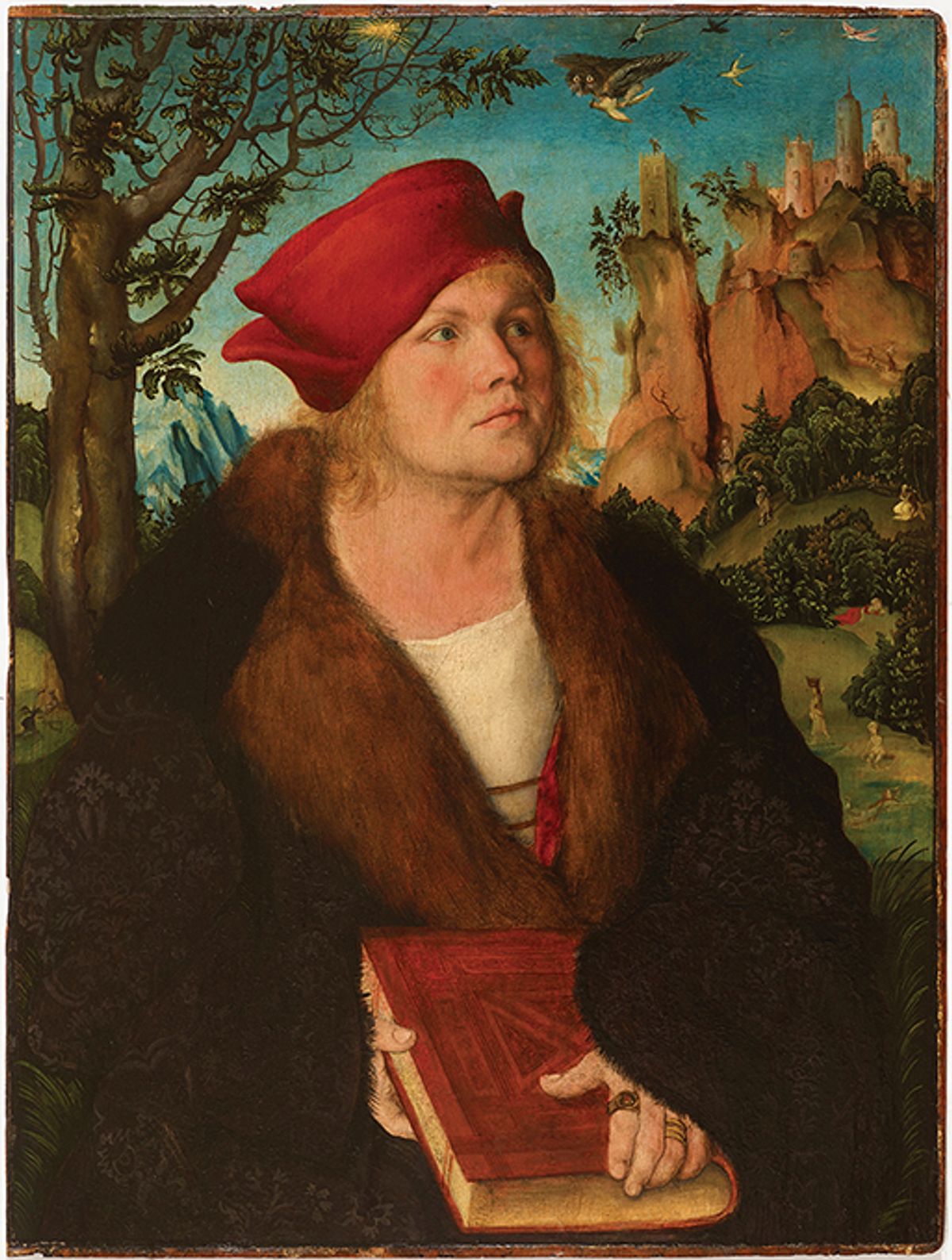Lucas Cranach the Elder’s illustrious career as court painter to the Saxon electors and friend of Martin Luther has been the subject of many exhibitions. But a Swiss-Austrian show is the first seeking to shed light on the early stages of his career as a young painter in Vienna.
While there is no documentary proof, his first known paintings suggest Cranach (1472-1553) emigrated to Vienna before he turned 30, in about 1500—probably in the hope of winning commissions to paint portraits of the Vienna Humanist Circle, a group of intellectuals who were pushing for reforms. His work appears to have been warmly welcomed there.

Johannes Cuspinian's wife, Anna © Oskar Reinhart Collection Am Römerholz/P. Schälchli
Wild and raw
“It is very different from the courtly refinement of Cranach’s later work,” says Kerstin Richter, the curator of the show and head of the Oskar Reinhart Collection Am Römerholz in Winterthur, Switzerland. “Early Cranach is very expressive, quite wild and raw—perspective was not so much his thing and it was more about colour and drama and emotion.”
The exhibition Cranach: the Early Years in Vienna opens at the Winterthur museum this month before travelling to Vienna’s Kunsthistorisches Museum (KHM) in June, with the addition of different works and a change of emphasis. Because several of the works on paper and parchment cannot be exposed to light for long, they can only be shown at one venue. So, the Winterthur show will focus on portraits while in Vienna the emphasis will be on Cranach’s early religious painting.
The cooperation between the Oskar Reinhart Collection Am Römerholz and the KHM began with the Vienna museum’s Pieter Bruegel the Elder exhibition in 2018. The Swiss museum loaned its Bruegel painting The Adoration of the Magi in the Snow (1563) for the first time ever. When Oskar Reinhart donated his collection to the museum in 1965 it was on the condition that works would never go on loan, Richter says. It was not until 2018 that the museum could relax these conditions. “Now we can enter into cooperation agreements with other museums.”
Around 11 paintings from the early phase of Cranach’s career survive, six of which will be shown in Winterthur. Those missing from the show are either too fragile to make the journey or are national treasures that are not allowed to travel, such as Rest on the Flight Into Egypt (1504) in the Gemäldegalerie in Berlin (which, in any case, was probably painted after Cranach’s Vienna stay).
Unsparing detail
The show will include a marriage diptych (around 1502), from the museum’s own collection, of the Austrian humanist and scientist Johannes Cuspinian and his wife Anna.
A painting on loan from the Hessische Hausstiftung in Kronberg—Portrait of a Beardless Young Man—remains a bit of a mystery though. It was previously attributed to Albrecht Dürer but is now believed to be a very early Cranach.
A particularly graphic highlight will be the KHM’s Crucifixion of Christ (around 1500), also known as the Schotten Crucifixion, which is universally accepted as one of the works Cranach produced in Vienna. It is unsparing in detail, with Christ’s bloody tongue hanging out of his mouth. The KHM has also loaned the earliest dated Cranach painting still in existence. The Penance of St. Jerome (1502) shows the agitated saint clasping his beard and gesturing wildly with one arm while a lion sits at his feet, eyeing the viewer menacingly.
The museum will also exhibit five rare early drawings and six woodcuts, as well as some of the earliest
examples of printed books, like the 1506 Missale Salisburgense from the Austrian National Library.
• Cranach: the Early Years in Vienna, Oskar Reinhart Collection Am Römerholz, Winterthur, 12 March-12 June;
Kunsthistorisches Museum, Vienna, 21 June-16 October


